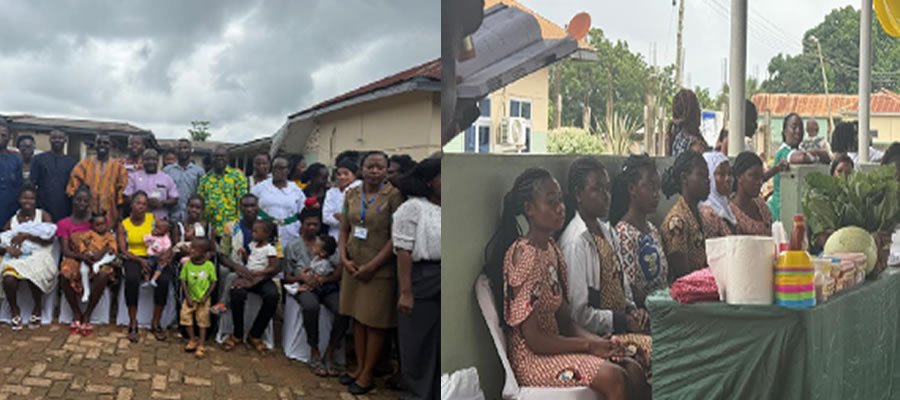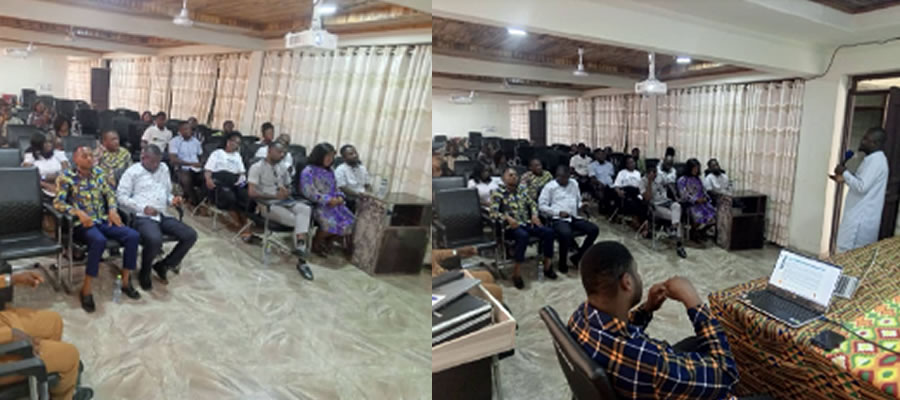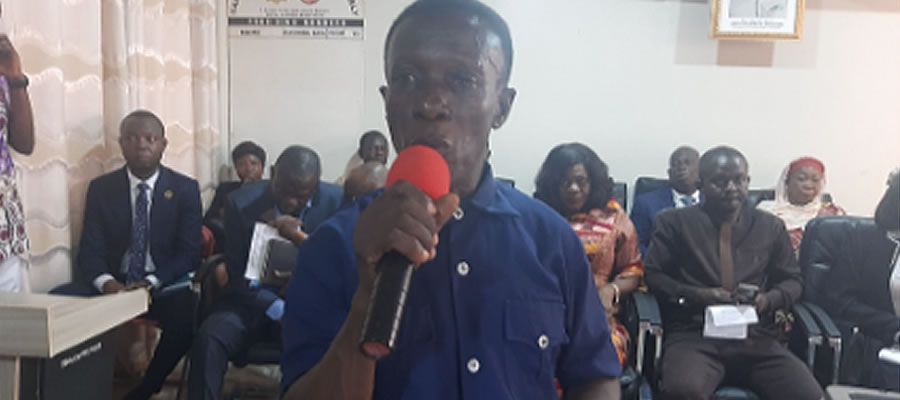

Location And Size
Tano South Municipal is one of the 22 Districts in the Brong Ahafo Region of Ghana. It lies between latitudes 7º00’N and 7º25’ N and between longitudes 1º45 W and 2º15 W. It is bounded on the North and East by the Offinso and Ahafo-Ano South Districts, both in the Ashanti Region. On the South, it is bounded by the Ahafo-Ano North District, also in the Ashanti Region and on its West and South-West by Tano North Municipal Assembly. (See Figures 1 & 2)
The District has a total land area of 635 square kilometres, which is 1.54 percent of the total land area of the Brong Ahafo Region. The District Strategic Location as the entry point into Brong Ahafo Region from southern Ghana puts it in a unique position to attract tourists if that sector could be well developed.
Topography And Drainage
The topography of the District is mostly made up of undulating land which rises gently from a height of about 270m to a peak of about 760m. However, the area to the East and South-East, bounded by the Ankaase - Techimantia – Bechem road, is fairly high rising between 360m and 760m in the Kwamisa area. (KNUST Planning Department, 1996). River Subri, a tribute of Tano River, flows through Subriso No. 3 and Techimantia.
The other important rivers in the District are Atobiaso in Derma, Moku in Techimantia and Dwomo, Kwasu in Bechem and and Dwofo which is a tributary of Kwasu River is also in Bechem. The land is well drained and free from flooding. It is also ideal for vegetable / food crop farming.
Climate
The Municipality lies in the Semi-equatorial climatic zone which experiences double maximum rainfall pattern. The first rainfall season is from April to June, with the heaviest in June and the second period is from September to October. The mean annual rainfall is between 125 cm and 180cm. The dry season is quiet pronounced and occurs between the months of November and March each year. The mean monthly temperatures range between 26ºc (in August) and 30ºc (in March).
Relative humidity is generally high, ranging between 75-80 percent in the Rainy season and 70-72 percent in the dry season.
Source: District Agriculture Office, Bechem
Vegetation
The Municipality lies in the moist semi-deciduous forest zone and has gross forest area of 1322.52sqkm with about 157.45sqkm of this under forest reserve. However, there is a vast emergence of guinea savanna and this is found in areas like Techimantia and, Subriso No. 3 where cattle rearing is predominant.
There are two main forest reserves namely; the Bosomkese Forest Reserve which covers a total area of 138.41sq km and Apaape Forest Reserve which also covers an area of about 19.04sqkm. In these reserves, one can find different tree species such as Odum, Mahogany, Ceiba, Cassia and Akasaa. These trees are of economic importance as they are used for lumbering, carving, chewing sticks, fuel wood and medicine.
Geology And Soils
Being located in the moist semi-deciduous forest zone, the soils in the District basically consist of forest ochrosols and the rubrisol - ochrosols intergrades. They are alkaline and are more richly supplied with nutrients. They are more clayey and therefore and have greater capacity to maintain water for plant use. They are therefore very ideal for the cultivation of forest crops like cocoa, coffee, oil palm and food crops like plantain, maize, rice, cassava, beans among others.
Natural Resources
- In addition to the vast fertile land which is suitable for the cultivation of a wide variety of cash and food crops, Tano South Muncipal has a fairly large expanse of forests with species such as Odum, Mahogany, Ceiba, Cassia and Akasaa which can be explored for timber.
- Preparations are underway for prospecting for gold in the following communities: Old Brosankro, New Brosankro and Onwe – Nkwanta.
Date Created : 11/21/2017 1:10:17 AM












 facebook
facebook
 twitter
twitter
 Youtube
Youtube
 +233 593 831 280
+233 593 831 280 0800 430 430
0800 430 430 GPS: GE-231-4383
GPS: GE-231-4383 info@ghanadistricts.com
info@ghanadistricts.com Box GP1044, Accra, Ghana
Box GP1044, Accra, Ghana